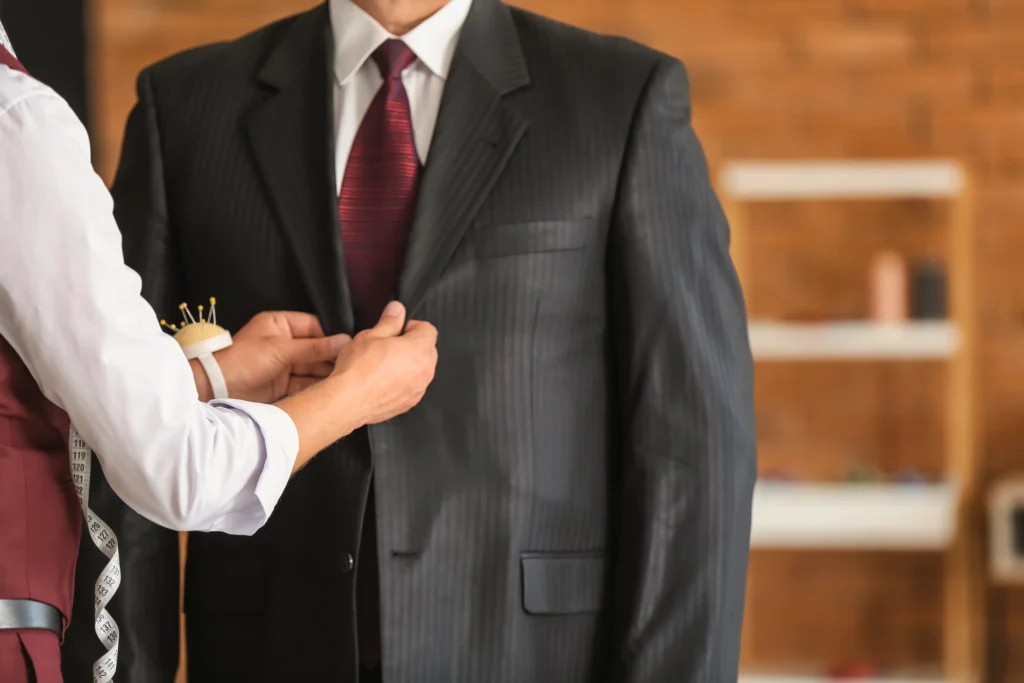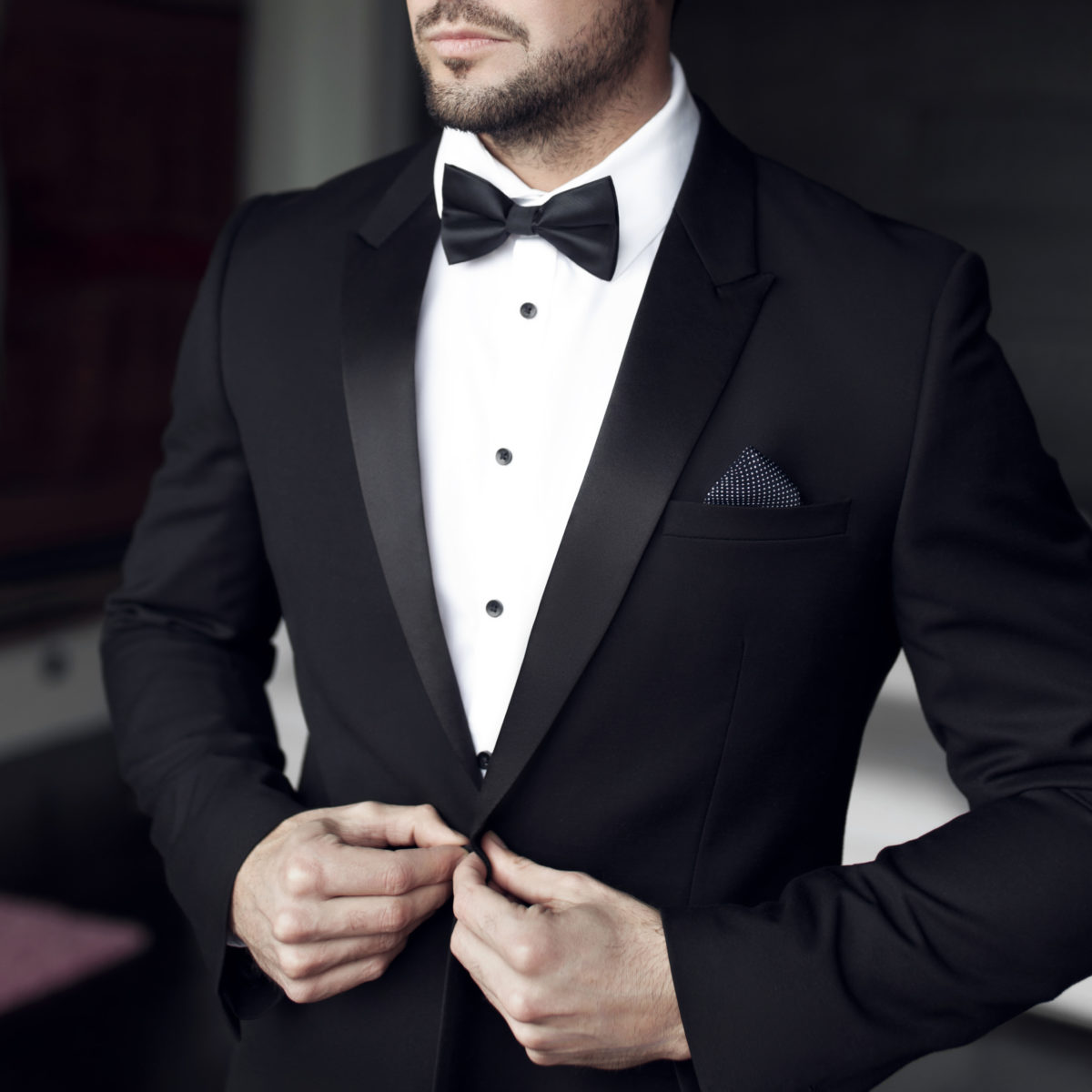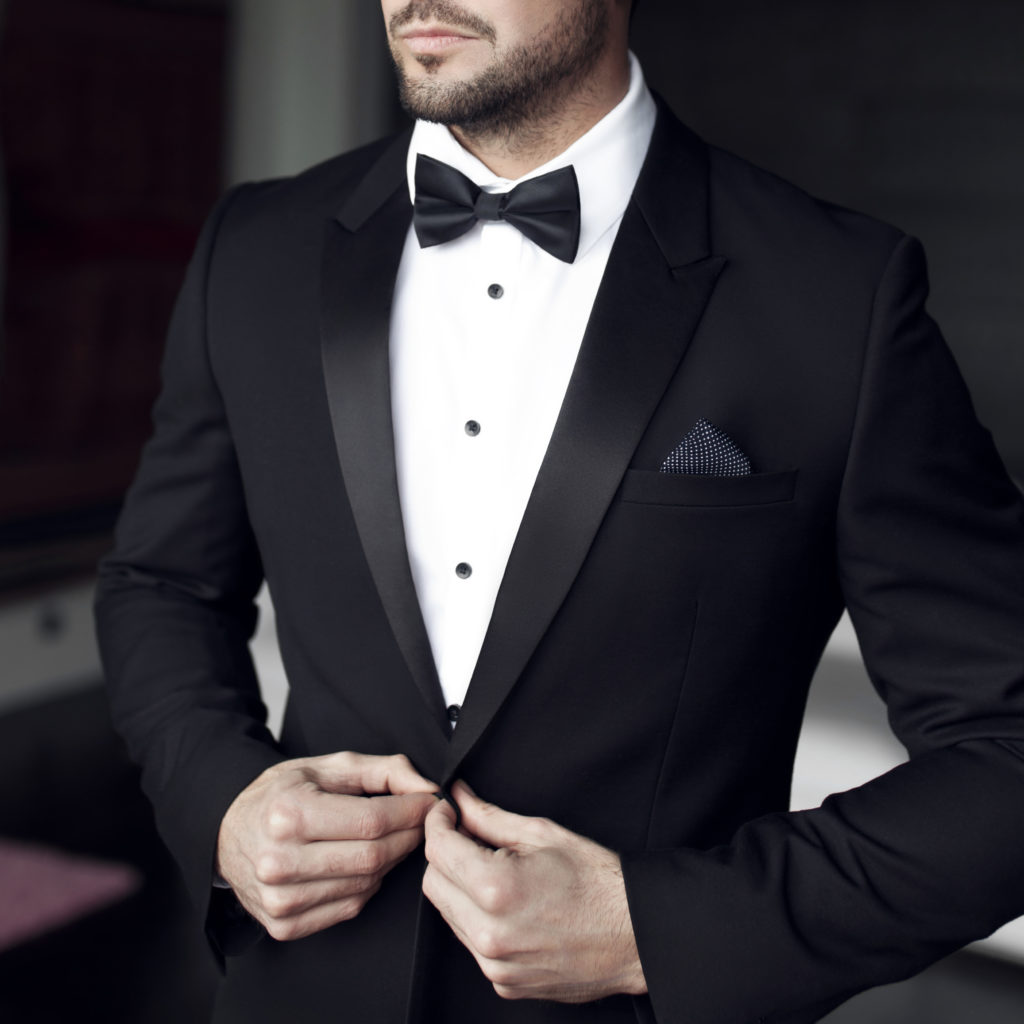What’s the difference between tailored and bespoke?
Have you ever wondered about the difference between tailored and bespoke clothing?
You’re not alone! These terms often get tossed around in the fashion world like confetti, but they actually mean quite different things.
Let’s unravel this fashion mystery together in plain, friendly terms.
The Tailored Tale
Think of tailored clothing as your favorite outfit, getting a perfect makeover.
When you get something tailored, you’re starting with an existing garment – maybe that suit you bought off the rack or that dress that’s almost perfect but not quite there.
A tailor then works their magic to make this ready-made piece fit you better.

Tailoring Suit or Bespoke Suit?
Here’s what typically happens with tailored clothing:
- The garment already exists in a standard size
- A professional tailor adjusts it to fit your body better
- They can take in seams, hem lengths, and adjust sleeves
- The basic structure and design stay the same
- It’s like giving your clothes a custom fit makeover!
Think of it like adjusting the driver’s seat in your car – the car is already built, but you can move the seat to make it perfect for you.
The Bespoke Journey
Now, bespoke is a whole different ballgame! When you go bespoke, you’re not starting with an existing piece – you’re starting with a blank canvas and your dreams. It’s like being the architect of your own clothes, where everything is created specifically for you from scratch.
The bespoke process typically includes:
- Multiple fittings (usually 2-3 at minimum)
- Choosing every single detail
- Creating a unique pattern just for you
- Hand-selecting fabrics, buttons, and linings
- Complete control over style elements
- A garment built from the ground up for your body
Imagine ordering a custom-built house where you get to decide everything from the foundation up – that’s bespoke clothing!
The Price Points: Let’s Be Real
Let’s talk money (because we’re all thinking about it!). There’s usually a significant price difference between these options:
Tailored clothing costs:
- Usually ranges from $20-200 for basic alterations
- Depends on the complexity of changes needed
- Still requires purchasing the original garment
Bespoke clothing costs:
- Significantly more expensive (often starting at $1000+ for suits)
- Reflects the time, skill, and personal attention involved
- Includes the cost of materials and multiple fittings
Time Investment: The Waiting Game
Timing is another big difference:
Tailored adjustments:
- Usually take a few days to a couple of weeks
- Simpler alterations might be done same-day
- Depends on the tailor’s workload and the changes needed
Bespoke creation:
- Takes several weeks to months
- Requires multiple fitting appointments
- Each piece is a journey, not a quick fix
Quality and Fit: The Bottom Line
Here’s where things get interesting:
Tailored clothing quality:
- Limited by the original garment’s quality
- Can improve fit significantly
- May have some limitations due to existing construction
Bespoke quality:
- Highest possible quality level
- Perfect fit from the start
- Built to last longer
- Can accommodate unique body features
When to Choose Which?
Let’s get practical about when to choose each option:
Go for tailored when:
- You find a piece you love that needs tweaking
- You’re working with a tighter budget
- You need the garment relatively quickly
- The existing piece is good quality and just needs adjusting
Choose bespoke when:
- You want something truly unique
- You have specific style requirements
- Budget isn’t your primary concern
- You’re investing in a special piece (like a wedding suit)
- You have unique fitting needs that off-the-rack can’t address
The Personal Touch
The most beautiful thing about both options is the personal attention you receive. Whether you’re getting something tailored or going full bespoke, you’re working with skilled craftspeople who care about making you look and feel your best.
Making Your Choice
Here’s the bottom line: both tailored and bespoke have their place in your wardrobe. It’s not about which is “better” – it’s about what works best for your needs, budget, and timeline.
Remember:
- Tailoring is about perfecting existing pieces
- Bespoke is about creating something entirely new
- Both can result in beautiful, well-fitting clothes
- Your choice should match your needs and circumstances
The Future of Custom Clothing
As we move forward, both tailoring and bespoke craftsmanship continue to evolve. While technology brings us new fitting techniques and fabric options, the core principle remains the same: creating clothing that makes you feel confident and comfortable.
Whether you choose to have something tailored or go the bespoke route, you’re investing in yourself and supporting the art of fine clothing craftsmanship. And that’s always in style!
Remember, at the end of the day, the goal is to have clothes that make you feel amazing. Sometimes that means tailoring your favorite off-the-rack find, and sometimes it means creating something completely unique. Either way, you’re taking a step toward having a wardrobe that truly fits and flatters you!



